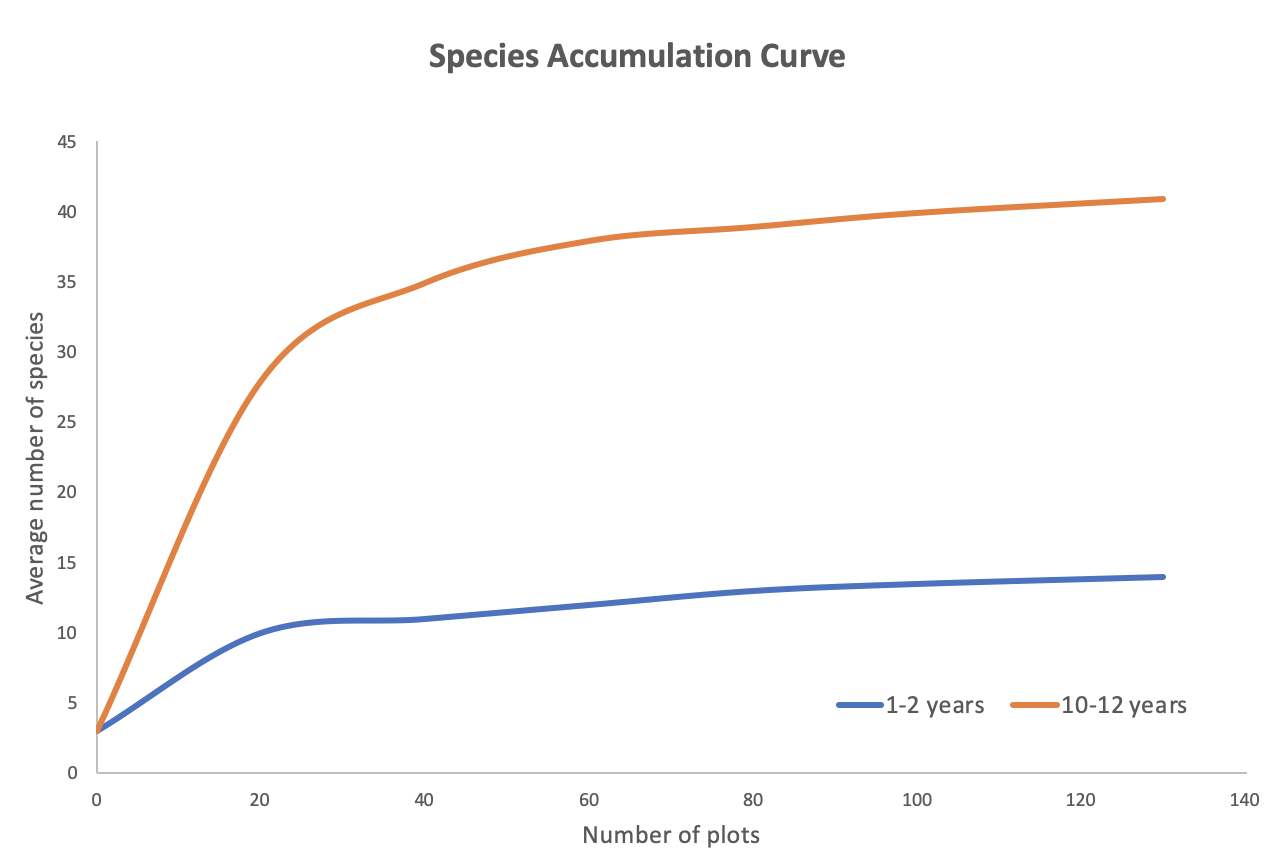17.5: Data Dive- Beaver Impacts on Wetlands
- Page ID
- 21807
\( \newcommand{\vecs}[1]{\overset { \scriptstyle \rightharpoonup} {\mathbf{#1}} } \)
\( \newcommand{\vecd}[1]{\overset{-\!-\!\rightharpoonup}{\vphantom{a}\smash {#1}}} \)
\( \newcommand{\id}{\mathrm{id}}\) \( \newcommand{\Span}{\mathrm{span}}\)
( \newcommand{\kernel}{\mathrm{null}\,}\) \( \newcommand{\range}{\mathrm{range}\,}\)
\( \newcommand{\RealPart}{\mathrm{Re}}\) \( \newcommand{\ImaginaryPart}{\mathrm{Im}}\)
\( \newcommand{\Argument}{\mathrm{Arg}}\) \( \newcommand{\norm}[1]{\| #1 \|}\)
\( \newcommand{\inner}[2]{\langle #1, #2 \rangle}\)
\( \newcommand{\Span}{\mathrm{span}}\)
\( \newcommand{\id}{\mathrm{id}}\)
\( \newcommand{\Span}{\mathrm{span}}\)
\( \newcommand{\kernel}{\mathrm{null}\,}\)
\( \newcommand{\range}{\mathrm{range}\,}\)
\( \newcommand{\RealPart}{\mathrm{Re}}\)
\( \newcommand{\ImaginaryPart}{\mathrm{Im}}\)
\( \newcommand{\Argument}{\mathrm{Arg}}\)
\( \newcommand{\norm}[1]{\| #1 \|}\)
\( \newcommand{\inner}[2]{\langle #1, #2 \rangle}\)
\( \newcommand{\Span}{\mathrm{span}}\) \( \newcommand{\AA}{\unicode[.8,0]{x212B}}\)
\( \newcommand{\vectorA}[1]{\vec{#1}} % arrow\)
\( \newcommand{\vectorAt}[1]{\vec{\text{#1}}} % arrow\)
\( \newcommand{\vectorB}[1]{\overset { \scriptstyle \rightharpoonup} {\mathbf{#1}} } \)
\( \newcommand{\vectorC}[1]{\textbf{#1}} \)
\( \newcommand{\vectorD}[1]{\overrightarrow{#1}} \)
\( \newcommand{\vectorDt}[1]{\overrightarrow{\text{#1}}} \)
\( \newcommand{\vectE}[1]{\overset{-\!-\!\rightharpoonup}{\vphantom{a}\smash{\mathbf {#1}}}} \)
\( \newcommand{\vecs}[1]{\overset { \scriptstyle \rightharpoonup} {\mathbf{#1}} } \)
\( \newcommand{\vecd}[1]{\overset{-\!-\!\rightharpoonup}{\vphantom{a}\smash {#1}}} \)
Overview
An ecosystem engineer is any animal that creates, significantly modifies, maintains or destroys a habitat. These organisms impact both the abiotic and biotic components of a habitat and can thus completely change landscapes. One 2017 study sought to understand if beavers (classic ecosystem engineer) could even be used as a tool for habitat restoration of wetlands. Specifically, this study focused on quantifying if wetland biodiversity improved as a result of reintroducing beavers on a landscape degraded by agriculture. Figure 2.4.6a below displays some of the results in this study:
 Figure \(\PageIndex{a}\): Average number of species observed in sample plots 1-2 years and 10-12 years after beavers were introduced. Graph by Rachel Schleiger (CC-BY-NC) modified from data in Law A, Graywood MJ, Jones KC, Ramsay P, and Willby NJ 2017.
Figure \(\PageIndex{a}\): Average number of species observed in sample plots 1-2 years and 10-12 years after beavers were introduced. Graph by Rachel Schleiger (CC-BY-NC) modified from data in Law A, Graywood MJ, Jones KC, Ramsay P, and Willby NJ 2017.
Questions
- What is the independent (explanatory) variable and the dependent (response) variable?
- What question(s) are the authors trying to answer with this graph?
- What trend(s) can be observed in this graph between the 1-2 and 10-12 timetables? Support your answer by referring to appropriate patterns in the graph.
- Do you think like the authors are satisfied with the results in the graph? Why?
- How can the results of this graph to inform future reintroduction of beavers where wetland restoration is needed?
- What information/patterns is not clear from this graph?
Raw Data From Above Graph(s)
Table \(\PageIndex{a}\): Raw data for average number of species observed in sample plots 1-2 years and 10-12 years after beavers were introduced. Graph by Rachel Schleiger (CC-BY-NC) modified from data in Law A, Graywood MJ, Jones KC, Ramsay P, and Willby NJ 2017.
| Number Of Plots | Average Number Of Species After 1-2 Years | Average Number Of Species After 10-12 Years |
|---|---|---|
| 0 | 3 | 3 |
| 20 | 10 | 28 |
| 40 | 11 | 35 |
| 60 | 12 | 38 |
| 80 | 13 | 39 |
| 100 | 13.5 | 40 |
| 130 | 14 | 41 |
Attribution
Rachel Schleiger (CC-BY-NC)


